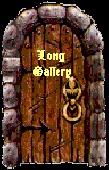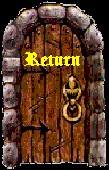
|
|

|

|

|

|

|
|
The first of the MacRogues to appear in written records was Gregor the Light-fingered in the reign of Alexander II between 1214 and 1249. It was probably this Gregor MacRogue who built Caer Neochiallach up from nothing. When he started, all there was was swamp. Everyone said he was daft to build a castle in a swamp, but he built it all the same, just to show 'em. It sank into the swamp. So he built a second one. That sank into the swamp. So he built a third one. That burned down, fell over, then sank into the swamp. But the fourth one stayed up. And that was the first Caer Neochialloch.
|
|

|
|
Set against the backdrop of the Baoghalta Mountains, His Lairdship and aid de campe Rocky Rococo on The Stone of English Muffin, upon which MacRogues have been installed as Laird of Baoghalta ever since the famous battle of the same name.
|
|

|

|

|
|
While few written records have survived, tradition places the original home of the MacRogues on the disputed border between Scotland and Ireland. Apparently this area had been extensively fought over since the inconclusive Battle of Baoghalta left the territory in dispute. An early text by Brother Maynard, later to become keeper of the Holy Relics of Antioch, seems to indicate that the O'Neils took the position that this area, which afterword became know as the Baoghalt Mountains, originally belonged to the descendents of Fergus of Dal Riada, and thus was properly part of Scotland. The Scots, on the other hand, were equally as adamant that the region was part of the Ulaid and thus was a part of Ireland.
|
|

|

|
The Tale of MacRogue.
|
Because of limited resources, the job of translating the MacRogue library of old manuscripts into modern English is going slowly. And because the manuscripts have never been cataloged, the history will not be translated in historical order. Thus bits and pieces will be added to the public display (which is in historical order) as we translate them.
|
|
|

|

|

|



